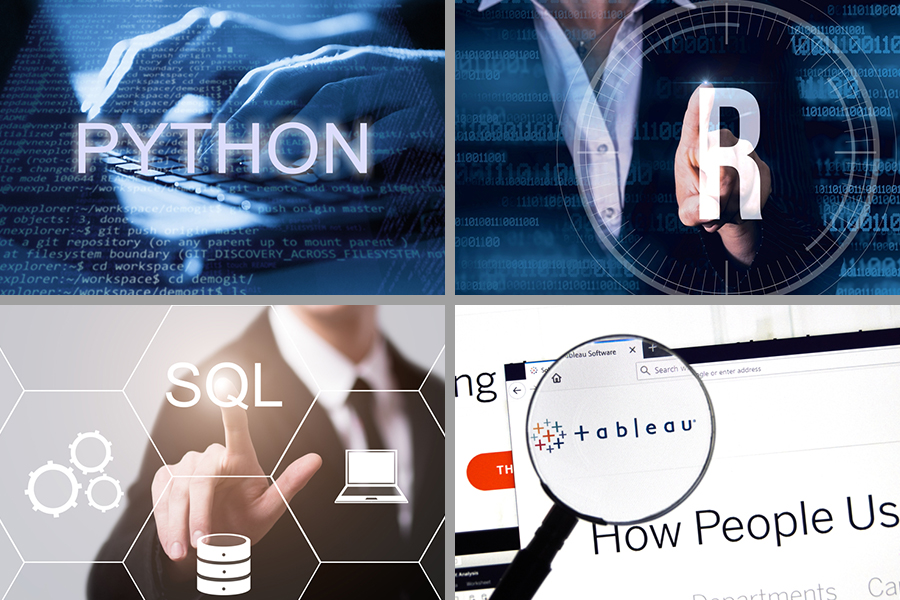In today’s data-driven world, organizations are harnessing the power of data to gain valuable insights, make informed decisions, and drive business growth. Data analytics plays a crucial role in this process, providing the tools and techniques to extract meaningful information from data. In this comprehensive guide, we will explore the basics of data analytics, from its concepts to real-world applications. Whether you’re a data enthusiast, a business professional, or a budding data analyst, this guide will equip you with the knowledge and skills to navigate the world of analytics.
Understanding Data Analytics
Data analytics is the process of examining raw data to uncover patterns, draw conclusions, and make informed decisions. It encompasses a wide range of activities, including data collection, data cleaning, data transformation, data modeling, and data visualization. By performing these tasks, organizations can gain a deeper understanding of their data and extract valuable insights to drive strategic initiatives.
Importance of Data Analytics
In today’s fast-paced business landscape, data has become indispensable. It enables organizations to identify trends, uncover hidden patterns, and make data-driven decisions. With data analytics, businesses can optimize operations, enhance customer experiences, and gain a competitive edge in the market.
Key Concepts in Data Analytics

To master data analytics, it’s essential to familiarize yourself with key concepts such as descriptive analysis, predictive analysis, and prescriptive analysis.
Descriptive Analysis
Descriptive analysis focuses on summarizing and interpreting historical data. It involves techniques like mean, median, mode, and visualization methods such as histograms and bar charts. Descriptive analysis helps organizations gain insights into past performance and understand the current state of affairs.
Predictive Analysis
Predictive analysis uses statistical models and machine learning algorithms to forecast future outcomes based on historical data. It helps businesses anticipate trends, make accurate predictions, and make proactive decisions.
Prescriptive Analysis
Prescriptive analysis takes it a step further by providing recommendations and actionable insights based on the data. It involves analyzing various scenarios and suggesting the best course of action to achieve desired outcomes.
Getting Started with Data Analytics
Now that we have a solid understanding of data analytics, let’s explore how to get started on your journey:
Data Analytics Tools and Technologies

Data analytics relies on various tools and technologies to process and analyze data.
Python
Python is a versatile programming language widely used for analytics due to its rich ecosystem of libraries and frameworks, such as NumPy, Pandas, and scikit-learn. It provides powerful capabilities for data manipulation, analysis, and visualization.
R
R is another popular programming language for data analytics, known for its extensive collection of statistical and graphical techniques. It offers a wide range of packages, making it suitable for exploratory data analysis, statistical modeling, and data visualization.
SQL
Structured Query Language (SQL) is essential for managing and manipulating large datasets stored in databases. It allows you to retrieve, filter, and aggregate data for analysis purposes.
Tableau
Tableau is a leading data visualization tool that enables users to create interactive dashboards and reports. It simplifies the process of visualizing complex data and communicating insights effectively.
Steps in the Data Analytics Process
To effectively utilize data analytics, it’s important to follow a systematic approach. The process typically involves the following steps:
Data Collection
Data collection involves gathering relevant data from various sources, such as databases, files, APIs, or web scraping. It’s crucial to ensure the data is accurate, complete, and representative of the problem at hand.
Data Cleaning and Preparation
Before analyzing the data, it’s necessary to clean and prepare it by handling missing values, removing duplicates, and transforming variables into appropriate formats. This step ensures the data is suitable for analysis and minimizes errors.
Data Exploration and Visualization
Data exploration allows you to gain initial insights into the dataset by examining its structure, distributions, and relationships between variables. Visualization techniques, such as scatter plots, histograms, and heatmaps, help reveal patterns and identify trends.
Data Analysis and Modeling
In this phase, you apply statistical techniques, machine learning algorithms, or other analytical methods to extract insights from the data. This may involve hypothesis testing, regression analysis, clustering, or classification, depending on the nature of the problem.
Interpretation and Communication
After analyzing the data, it’s crucial to interpret the results and communicate the findings effectively. Visualization tools and storytelling techniques can help convey complex insights to stakeholders in a clear and concise manner.
Real-World Applications of Data Analytics

Data analytics finds applications in various industries and domains. Let’s explore some of the key areas where data is making a significant impact:
Business Intelligence and Decision-Making
Business intelligence relies heavily on analytics to drive strategic decision-making. By analyzing operational data, customer data, and market trends, organizations can gain insights that inform critical business decisions.
Customer Analytics and Personalization
Customer analytics leverages data to understand customer behavior, preferences, and needs. By segmenting customers, predicting buying patterns, and personalizing experiences, businesses can enhance customer satisfaction and loyalty.
Predictive Analytics and Forecasting
Predictive analytics utilizes historical data to make predictions about future outcomes. It finds applications in demand forecasting, sales forecasting, inventory management, and risk assessment, enabling organizations to optimize operations and mitigate risks.
Fraud Detection and Risk Analytics
Data analytics plays a vital role in detecting fraudulent activities and managing risks. By analyzing patterns and anomalies in data, organizations can identify potential fraud instances, mitigate risks, and safeguard their assets.
Challenges in Implementing Data Analytics
Implementing analytics initiatives can be challenging for organizations. Some common obstacles include the complexity of data, lack of skills and resources, data silos, and data quality and integrity issues. Overcoming these challenges requires investing in the right technology, building a skilled workforce, breaking down data silos, and implementing data quality management practices.
Conclusion
Mastering the basics of data analytics is a crucial step toward leveraging the power of data for informed decision-making and business success. Remember, analytics is a continuous learning journey. Stay curious, explore new tools and techniques, and keep up with the latest advancements in the field. With the right mindset and a commitment to data-driven decision-making, you can embark on a rewarding career or drive impactful changes within your organization.
If you’re ready to dive deeper into the world of data, AI Data House offers comprehensive resources to enhance your analytical skills.
Now, it’s time to embrace the power of data and unleash its insights to drive meaningful outcomes. Are you ready to take the next step?










